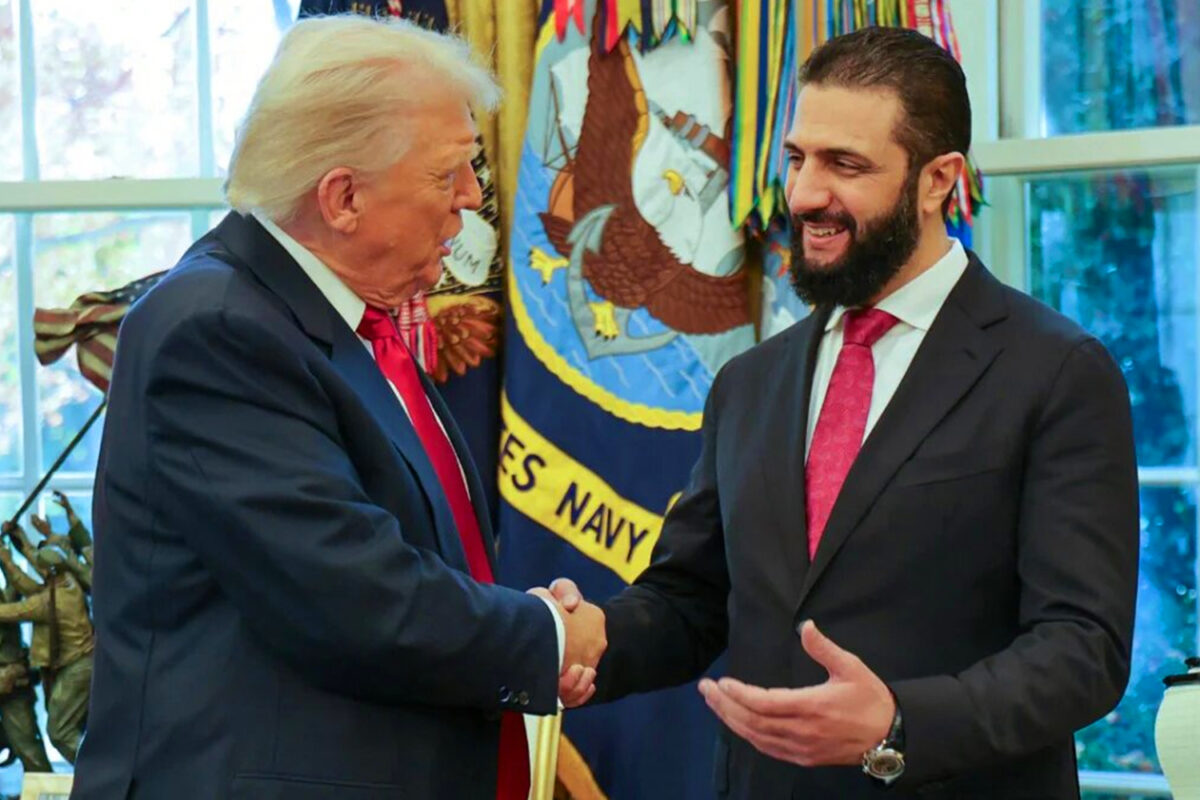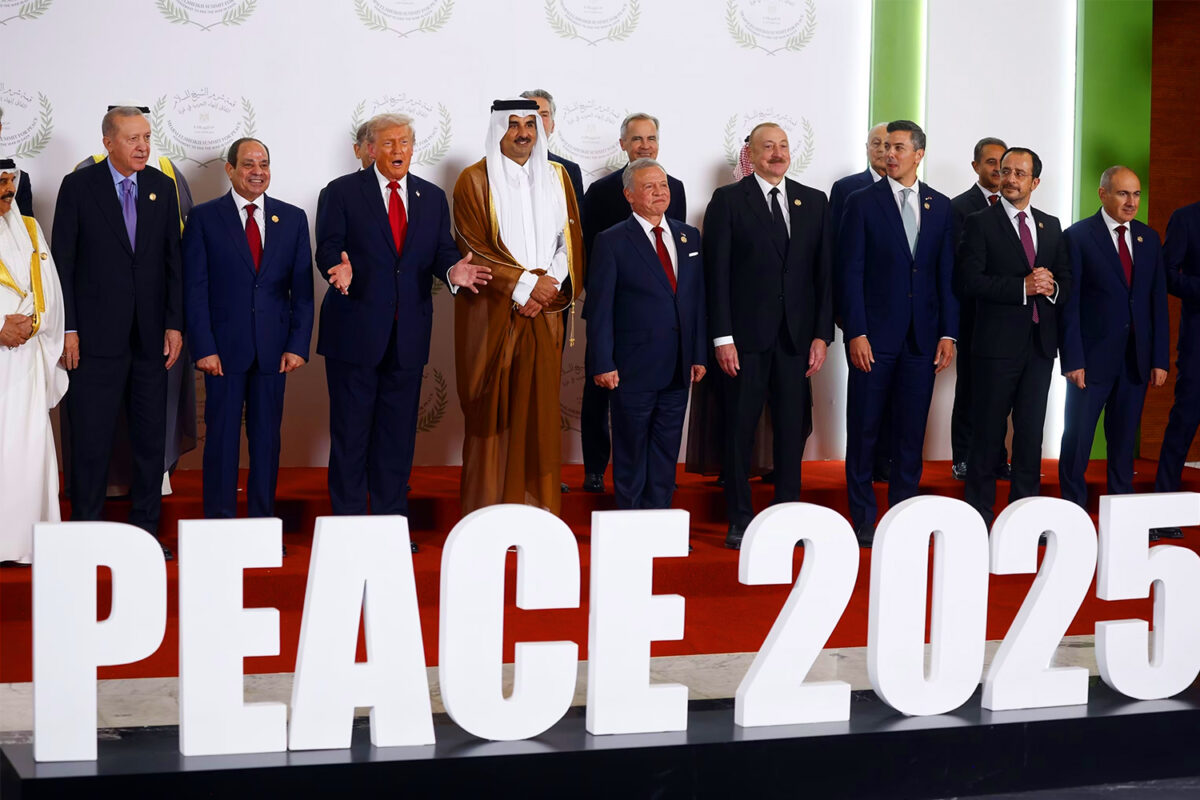By Muzammil Hussain
On 7th April 2018, a suspected chemical attack was carried out in the Syrian city of Douma, with at least 70 people killed by the attack. On-site medics stated the cause of those deaths was exposure to chlorine and sarin gas. This attack follows a multitude of suspected, and several confirmed chemical weapon attacks by the Syrian regime, the most notable of which was the 21st August attack on zamalka-Ein Tarma, in which over 1400 people were killed. In response, the US, UK and France launched air strikes against various suspected chemical weapons facilities on the morning of 14th April. Examining these strikes indicates they will not alter the strategic picture in this 8 year conflict.
For days an increasing coalition of mainly western countries put out information on their intent to strike Syria, in affect informing the Syrian regime, for its recent use of chemical weapons. With a flurry of diplomatic initiative both at the UN and between western capitals, and the movement of significant US, French and UK military assets towards Syria, it was an open question whether the initial very limited strikes on largely empty buildings were to be followed up with more substantial attacks.[1]
Although the 21st August 2017 attack was much larger and more deadly than the recent Douma attack, and the use of chemical weapons was confirmed by the OPCW,[2] it did not precipitate a US attack despite the statement of the president of the United States that the use of chemical weapons were a red line, whose use would definitely result in punitive military strikes against its perpetrators. Although the difference in response may be attributed to a change in the administration of the US, in reality US policy in Syria remains unchanged since the 21st August 2017 attack, and is similar to the previous administrations policies, being mainly centred on the preservation of a secular regime in Damascus and the suppression of those who are calling for regime change.[3]
Although the US strikes on Syria are very limited in nature the marked difference between the response to the current use of chemical weapons and the previous uses where, despite the overwhelming evidence for the use of chemical weapons by the Assad regime, the use of force was not an option that was given serious consideration by the Obama administration. So what has changed in the calculus of the US foreign policy officials?
The dynamics of the Syrian conflict has been in flux since the beginning of the revolution, at the beginning of the revolution in 2011, the position of Assad seemed unassailable, but large scale desertions amounting to nearly two thirds of Assad’s army, left him teetering on the edge of collapse in 2013. Hence any US strikes even fairly limited in nature would have had a dramatic psychological effect on regime loyalists pushing them over the edge and most probably resulting in an alawite withdrawal from Damascus to its heartland in Latakia province, thus abandoning the rest of Syria to mostly Islamist rebel groups. In effect the refusal of the US to enforce one of the major taboo’s of the post war international order, was the most important psychological factor which prevented a regime implosion in 2013. In effect the US tacitly stated that no matter what happens the US will back the regime.
The situation in Syria is radically different now, the regime is no longer a single entity rather it’s a collection of semi-independent militias held together by Iranian money and Russian threats. The strongest of these militia’s is the one controlled by air force intelligence and the inner circle of Bashar al Assad. The most apt description of the regime is that it is simply the strongest militia, with a semi functioning air force, whose writ extends little beyond the confines of Damascus and Latakia with the rest of it territory nominally under its control but in fact controlled by a myriad of different locally recruited militias.[4]
Hence in actuality the real powers that guarantee the security of the regime are the 70,000+ Iranian proxies and the tens of thousands of sectarian Iraqi militias, who together with the ever-present threat of the Russian air force, maintain some vestiges of order among the often bickering and competing regime militias.
So in the calculation of the US policy officials if, in addition to the current strikes, there are any subsequent strikes on the regime, including relatively heavy ones as compared to the ones conducted in 2017, they will not lead to a significant change in the dynamics of power in Syria as the stability of the regime is not guaranteed by the Assad’s forces alone.
But the more important consideration for US foreign policy officials is the status and influence of Russia in the inevitable political resolution to the Syrian conflict. The Russians entered Syria with US blessing, to accomplish a task which although critical to US interests it was unable to achieve itself. Beating Syria’s population into submission so they accept a genocidal regime would have damaged US world standing irreparably, but on the other hand is a task well suited to Russian military strategy, practiced and perfected in Chechnya. With a fractured and infighting prone rebel forces, effectively controlled by its ally Turkey,[5] and the secular Assad regime in no danger of falling, the attention of US foreign policy officials has shifted to its long-standing adversary, for whom it would prefer a significantly reduced role in any future settlement. [6]
After eight years of tacit support for the Assad’s regime, it is not the case that the US has suddenly become sensitised to the suffering of Syrians, rather it is in need of a pretext to delineate Russian power and show to all stakeholders in the Syrian conflict that it, rather than Russia is the ultimate arbitrator in this dispute, and it will assert its will when and where it chooses.
[1] http://time.com/5239044/us-navy-warships-sailing-syria/
[2] https://en.wikipedia.org/wiki/Use_of_chemical_weapons_in_the_Syrian_Civil_War
[4] https://warontherocks.com/2016/08/the-decay-of-the-syrian-regime-is-much-worse-than-you-think/
[5] https://en.wikipedia.org/wiki/Inter-rebel_conflict_during_the_Syrian_Civil_War





3 comments
Aijaz Rasool
14th September 2020 at 11:56 am
Glad to see RO analysis here again I will be more better if you upgrade this site with pdf download option.
Adnan Khan
14th September 2020 at 11:04 pm
The printer friendly, social media tab, gives you a PDF version option
Aijaz Rasool
20th September 2020 at 6:49 pm
Jazakallah khair sir ji